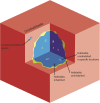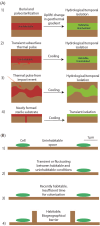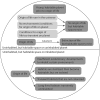Where the microbes aren't
- PMID: 39725411
- PMCID: PMC11737512
- DOI: 10.1093/femsre/fuae034
Where the microbes aren't
Abstract
Although a large fraction of Earth's volume and most places beyond the planet lack life because physical and chemical conditions are too extreme, intriguing scientific questions are raised in many environments within or at the edges of life's niche space in which active life is absent. This review explores the environments in which active microorganisms do not occur. Within the known niche space for life, uninhabited, but habitable physical spaces potentially offer opportunities for hypothesis testing, such as using them as negative control environments to investigate the influence of life on planetary processes. At the physico-chemical limits of life, questions such as whether spaces devoid of actively metabolizing or reproducing life constitute uninhabitable space or space containing vacant niches that could be occupied with appropriate adaptation are raised. We do not know the extent to which evolution has allowed life to occupy all niche space within its biochemical potential. The case of habitable extraterrestrial environments and the scientific and ethical questions that they raise is discussed.
Keywords: astrobiology; biogeography; extremophiles; limits; microbial distribution.
© The Author(s) 2024. Published by Oxford University Press on behalf of FEMS.
Conflict of interest statement
None declared.
Figures










References
-
- Adams J, Riediger C, Fowler M et al. Thermal controls on biodegradation around the Peace River tar sands: paleo-pasteurization to the west. J Geochem Explor. 2006;89:1–4.
-
- Adcock CT, Hausrath EM. Weathering profiles in phosphorus-rich rocks at Gusev Crater, Mars, suggest dissolution of phosphate minerals into potentially habitable near-neutral waters. Astrobiology. 2015;15:1060–1075. - PubMed
-
- Affholder A, Guyot F, Sauterey B, Ferrière R, Mazevet S. Bayesian analysis of Enceladus’s plume data to assess methanogenesis. Nat Astron. 2021;5:805–814.
-
- Baker-Austin C, Dopson M. Life in acid: pH homeostasis in acidophiles. Trends Microbiol. 2007;15:165–171. - PubMed
Publication types
MeSH terms
Grants and funding
LinkOut - more resources
Full Text Sources

